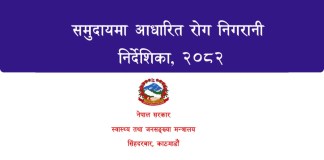In the 2015 Paris Agreement, the international community agreed to “strengthen the global response to climate change” by limiting the “increase in global average temperatures to well below 2oC above pre-industrial levels,” and ideally to 1.5oC. As recognized in the Agreement, to stay within these limits, global greenhouse gas emissions must be rapidly reduced, “so as to achieve a balance between anthropogenic emissions by sources and removals by sinks of greenhouse gases in the second half of this century”—a situation commonly described as “net zero.” The need to reach net zero has prompted growing interest in developing strategies to remove greenhouse gases from the atmosphere. While greenhouse gas removal cannot substitute for emissions reductions, it is likely a necessary complement to them, required to offset residual emissions for which there are no feasible control technologies.
A new white paper published today by the Sabin Center for Climate Change Law explores the application of the Paris Agreement to an emerging set of greenhouse gas removal techniques targeting methane in the atmosphere. A short-lived but highly potent greenhouse gas, methane is emitted through various human activities (e.g., agriculture and fossil fuel production), as well as from natural sources (e.g., wetlands). The natural emissions, in particular, are difficult to control and expected to increase significantly in coming years due to climate change. In theory, atmospheric methane removal could help to compensate for increasing natural methane emissions, as well as hard-to-abate anthropogenic emissions. However, atmospheric methane removal techniques are still in the early stages of development, and significantly more research is needed to evaluate their efficacy and impacts (both positive and negative).
The Sabin Center’s new white paper—Methane Removal Under the Paris Agreement—analyzes key provisions of the Paris Agreement that could impact whether, when, where, and how atmospheric methane removal research and (if ultimately deemed appropriate) deployment move forward. As explained in the paper, while scientists have been exploring the potential for atmospheric methane removal since at least 2010, it has received almost no attention in international climate discussions. It was not considered at all when the Paris Agreement was negotiated and, in the ten years since, has been raised only in passing in debates about how to operationalize the Paris Agreement Crediting Mechanism (PACM). While this is understandable given the early stage of development of the field, as interest in atmospheric methane removal grows, so too does the need to understand whether and how it fits within the Paris Agreement framework. The Sabin Center’s new white paper aims to shed light on that issue. Key findings include:
- While atmospheric methane removal is still in the early stages of development, if proven safe and effective, it could help to advance global climate goals set out in the United Nations Framework Convention on Climate Change and Paris Agreement. However, atmospheric methane removal is at best a complement to, and cannot be substituted for, rapid and deep emissions reductions.
- Atmospheric methane removal arguably qualifies as “mitigation” of climate change within the terms of the Paris Agreement, and thus could be included in parties’ Nationally Determined Contributions (NDCs) under the Agreement. Parties would need to be transparent about their reliance on atmospheric methane removal, and ensure that it does not undermine their pursuit of ambition emissions reduction strategies. Precisely how to balance emissions reductions and removals is likely to be a subject of ongoing debate.
- Atmospheric methane removal projects may, in the future, qualify for participation in the PACM established via Article 6.4 of the Paris Agreement. Before that can happen, however, rules and standards will need to be developed on accounting, reporting and verification, and avoidance of environmental and social impacts (among other things).
Read the full white paper on Columbia’s Scholarship Archive here.

Romany Webb
Romany Webb is a Research Scholar at Columbia Law School, Adjunct Assistant Professor of Climate at Columbia Climate School, and Deputy Director of the Sabin Center for Climate Change Law.
Great Job Romany Webb & the Team @ Climate Law Blog Source link for sharing this story.





